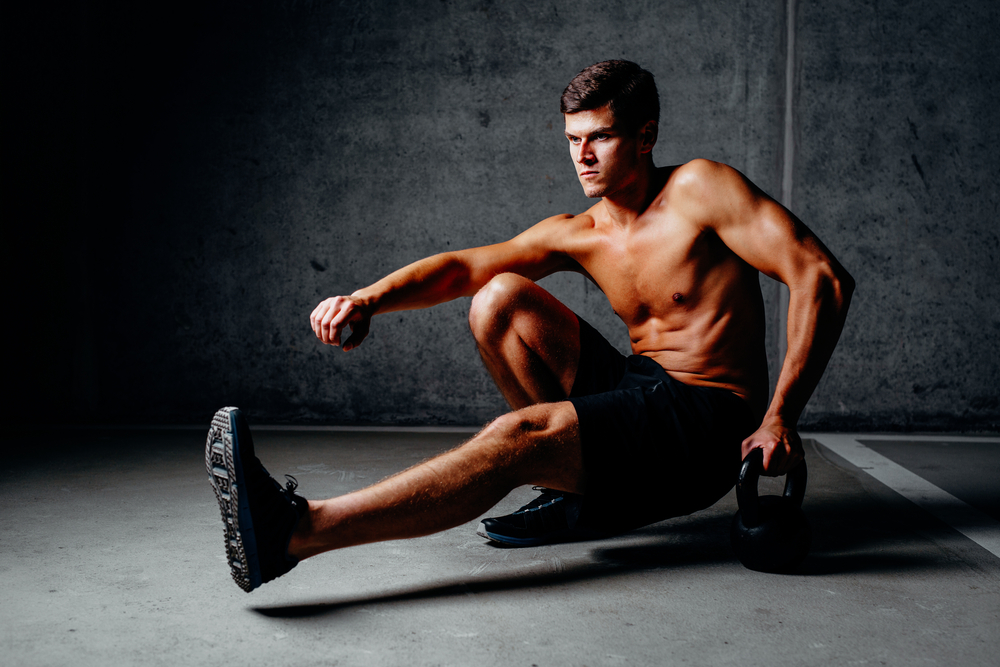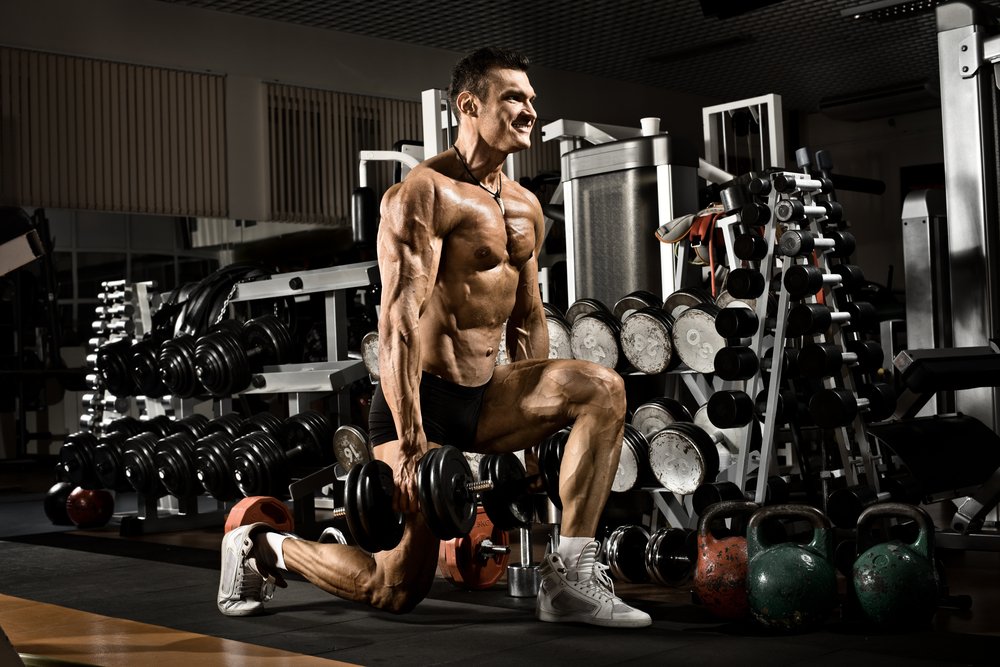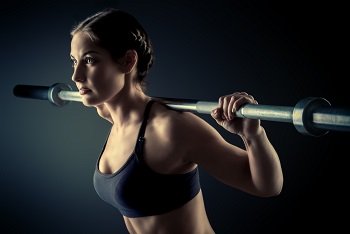Volleyball Quickness
5 Tips to Develop Faster Players
Volleyball quickness tips for playing faster volleyball.
1. Wake up the Glutes
To be a strong explosive volleyball player, we need an appropriate balance between strength and mobility in our hips.
This is true if we want to squat and deadlift more weight or sprint to a volleyball faster.
The glutes are often weak and it's hard to overtrain them.
Its no surprise that the best athletes in sports have an amazing overall development in both hip flexibility and strength.
Back Squats to Work the Glutes, Quads, and Hamstrings
It's
rare to see athletes encounter any sort of injury to the glutes. It's
much more common to see injuries to the hamstrings and lower back.
The fact of the matter is that most athletes are tight in the hamstrings, lower back and hip flexors.
It's more common to see problems related to a lack of strength and motor control in the gluteal muscles.
For example, when the hip flexors (antagonists to the gluteus maximus)
are overactive, the gluteus maximus becomes weak via a mechanism known
as "reciprocal inhibition".
Also, if your glute muscles aren't firing properly, the hamstrings and
erector spinae muscles are forced to work overtime to compensate. This
is known as
"synergistic dominance".
This unfortunate cycle (muscles working to compensate) often results in
injury, or at the very least, sub-optimal levels of performance.
Improve volleyball quickness by training your glutes in a way that will improve function in the hips, lower back and hamstrings
making you a faster and more powerful volleyball player.
2 Strengthen the Psoas
The psoas (so-az) muscle runs through your hips to connect the lower portion of your back to the top of your thigh.
It's one of your body's main back stabilizers and hip flexors (the
muscles that line your hips and allow you to bring your knees toward
your chest).
If your lifestyle involves a lot of sitting, the psoas could become rounded like
a banana. So now when you stand up, the psoas pulls on your back. This pulling
on your back can result in pain and lower-back injury.
The psoas is the muscle responsible for raising your knee up to 90 degrees and above from a standing position.
When the psoas is weaker than the rectus femoris and tensor fascia latae
(TFL) you will tend to favor those muscles and will likely have a more
difficult time getting proper knee lift when
you move fast.
One key is being strong in 90 degrees plus of hip flexion, which leads to optimal femur control.
Try this exercise:
Sit with your knees bent on a low box or bench (6 to 10 inches high).
Maintaining good posture and keeping your abs tight, use your hips to
raise one bent knee slightly higher than your hips. If you lean forward
or backward, you're not performing the exercise correctly. Hold for 5
seconds, and return to the starting position.
The key is strengthening the muscle that efficiently lifts your knees up to 90 degrees or higher.
The only way to strengthen a weak psoas is by bringing your knee above 90 degrees.
Full hanging leg lifts is a popular ab exercise that also has the benefit of working the psoas.
Performing leg lifts above 90 degrees can really work the psoas and lower abs.
If you enjoyed these tips and would like to keep it close to you at any time, just save this pin to your Pinterest Volleyball Training Board.
3. Train the Forefoot
You've likely heard a coach yell out, Stay on your toes!
What the coach really means to say is, "Drive off the balls of your feet and less on your heels".
Watch any great athlete move fast and you'll notice their heels barely seem to hit the ground.
Most people are rearfoot dominant, which means they carry too much weight on their heels.
Moving more towards the mid and forefoot favors quicker, more efficient,
less stressful movement, and also makes it easier to activate the
powerful hip extensors, which have the capacity to really make you fly.
If you want to be a fast volleyball player, you need to get off your rearfoot and onto your mid & forefoot.
Generally, the best way to get yourself onto the forefoot, is by training barefoot and also becoming more glute dominant.
The idea is to do enough barefoot training that your feet begin to favor the barefoot posture.
4. Workout Shoeless
Training barefoot not only will allow you to become more forefoot dominant, but it's also more natural to move barefoot.
Why all the hype about barefoot training?
Through years of wearing shoes, tendons and ligaments shorten, muscles
weaken, and the risk for foot and ankle injuries increases.
Shoes tend to crush the foot into abnormal positions and you don't get the movement the foot is designed for.
Training Barefoot Improves Proprioception
Proprioception is the sense of the orientation of one's limbs in space.
Anything that involves moving our arms or legs in a precise way without looking at them invokes proprioception.
Proprioceptive ability can be trained, as can any motor activity.
Because your feet are the only point of contact between your body and the floor, your
volleyball quickness depends on how well you
have a sense of where they are.
The more precisely your feet work to grip the floor, the better they'll help you activate the muscles farther up your body.
The key is to free your feet up, allowing them to move and react to the surface beneath them.
You can also see how strength exercises involving the use of only one
leg are valuable. A one leg squat for example, will place a high
proprioceptive demand upon the body.
This exercise challenges the joint and muscle receptors of the lower
body to provide feedback regarding joint and limb position and
reposition them accordingly.

Single leg Squat
The first step to barefoot training is easy. Take your shoes off.
Walk around as much as you can without wearing shoes.
If you are someone that spends most of your day in tight bulky shoes, then you will benefit greatly by transitioning to
shoes where the sole is thin and there's hardly any arch support.
These types of shoes (for example, Chuck Taylors or Nike Frees) will
ensure your foot makes close contact with the floor and learns to
stabilize itself.
When you elevate the heels chronically you lose range of motion in dorsiflexion.
A problem with the Nike Shox training shoe is it keeps the heel constantly elevated.
This type of shoe and other types of shoes that
keep the heel in an elevated position ultimately will lead to ankle mobility problems.
When you lack mobility at a joint, your body tries to compensate by looking anywhere it can to find range of motion.
The trick with Chucks is buying a pair one size too big. It may feel
funny at first, but soon your feet will start to spread out. Your feet
will spread out to the actual size
they're suppose to be.
Performing Warm Up Barefoot
Many exercises in the weight room along with dynamic warm up exercises can be performed barefoot.
Forward skips, lunges, side shuffles, carioca, etc can all be performed
barefoot. The more you are able to spend time training barefoot, the more you'll
start to feel and move as you naturally should.
Barefoot training also helps prevent ankle sprains and ACL injuries
because when the foot becomes more reactive, injuries disappear.
5. Stretch the Quads and Psoas
Anyone that has considerably increased the muscular development of their
thighs will have a tendency to lean towards having tight quads.
Especially in volleyball, the quads work a great deal as shock absorbers. The result
is muscle fatigue, weakness, poor flexibility, and tightness.
Stretching the quads and rectus femoris turns off what are often tight and overactive muscles controlling the knee
which promotes better hip dominant movement.

Lunges Stretch the Psoas
That's not to say that muscular development of the thighs is a bad thing by any means, just pay attention to flexibility.
It's important for the psoas to be strong, but you don't want it to
become tight or it will negatively impact gluteal recruitment.
To improve volleyball quickness, also incorporate specific hip and ankle mobility drills.
Volleyball › Smarter Training › Quickness

